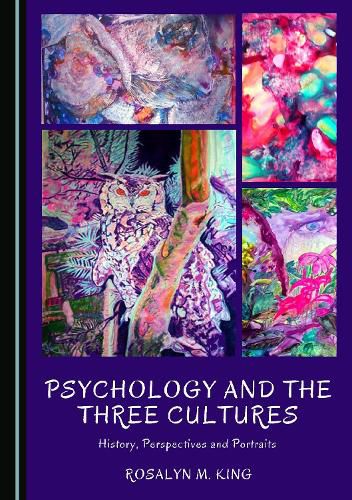Readings Newsletter
Become a Readings Member to make your shopping experience even easier.
Sign in or sign up for free!
You’re not far away from qualifying for FREE standard shipping within Australia
You’ve qualified for FREE standard shipping within Australia
The cart is loading…






This book discusses the history and evolution of the field of psychology and its position as a global, integrated, hub science. It presents the nexus between science, the humanities and social sciences. It addresses the seminal work of Cambridge physicist C.P. Snow, who, more than five decades ago, wrote the book on The Two Cultures, outlining the intellectual schism between the academic disciplines-the humanities, arts, religion and the sciences. Today, the social sciences comprise the third culture; and Jerome Kagan, a Harvard developmental psychologist, published a book in 2009, The Three Cultures: Natural Sciences, Social Sciences and the Humanities in the 21st Century, responding to Snow’s earlier concerns that includes a look at the newest culture-the social sciences. Psychology and the Three Cultures-History, Perspectives and Portraits, examines early and current notions about the three cultures reflecting on C.P. Snow’s treatise on The Two Cultures, and Jerome Kagan’s treatise on The Three Cultures, as related to the field of psychology. The book illustrates how psychological science, historically, has blended all these cultures in order to understand human nature. It traces the history of psychology, highlighting pivotal places and people from around the world contributing to the evolution of the field. The book documents psychology as a global, integrated, hub science and a blend of the disciplines. The discussion here includes the emergence of psychology from the field of philosophy and the many subfields currently representing psychology today. Examples are provided of select subfields moving across disciplines, as well as portraits of three revolutionary scientists-Carl Jung, William James and Stanislav Grof-whose work intersects many disciplines as they study, understand and describe human nature. This book is a must-read for scholars, psychologists, social scientists, scientists, historians, and medical professionals, undergraduate and graduate students studying the history of psychological science and its evolution. The book is also written for lay persons interested in the field of psychology, dispelling the myth of psychology as a pseudoscience.
$9.00 standard shipping within Australia
FREE standard shipping within Australia for orders over $100.00
Express & International shipping calculated at checkout
This book discusses the history and evolution of the field of psychology and its position as a global, integrated, hub science. It presents the nexus between science, the humanities and social sciences. It addresses the seminal work of Cambridge physicist C.P. Snow, who, more than five decades ago, wrote the book on The Two Cultures, outlining the intellectual schism between the academic disciplines-the humanities, arts, religion and the sciences. Today, the social sciences comprise the third culture; and Jerome Kagan, a Harvard developmental psychologist, published a book in 2009, The Three Cultures: Natural Sciences, Social Sciences and the Humanities in the 21st Century, responding to Snow’s earlier concerns that includes a look at the newest culture-the social sciences. Psychology and the Three Cultures-History, Perspectives and Portraits, examines early and current notions about the three cultures reflecting on C.P. Snow’s treatise on The Two Cultures, and Jerome Kagan’s treatise on The Three Cultures, as related to the field of psychology. The book illustrates how psychological science, historically, has blended all these cultures in order to understand human nature. It traces the history of psychology, highlighting pivotal places and people from around the world contributing to the evolution of the field. The book documents psychology as a global, integrated, hub science and a blend of the disciplines. The discussion here includes the emergence of psychology from the field of philosophy and the many subfields currently representing psychology today. Examples are provided of select subfields moving across disciplines, as well as portraits of three revolutionary scientists-Carl Jung, William James and Stanislav Grof-whose work intersects many disciplines as they study, understand and describe human nature. This book is a must-read for scholars, psychologists, social scientists, scientists, historians, and medical professionals, undergraduate and graduate students studying the history of psychological science and its evolution. The book is also written for lay persons interested in the field of psychology, dispelling the myth of psychology as a pseudoscience.